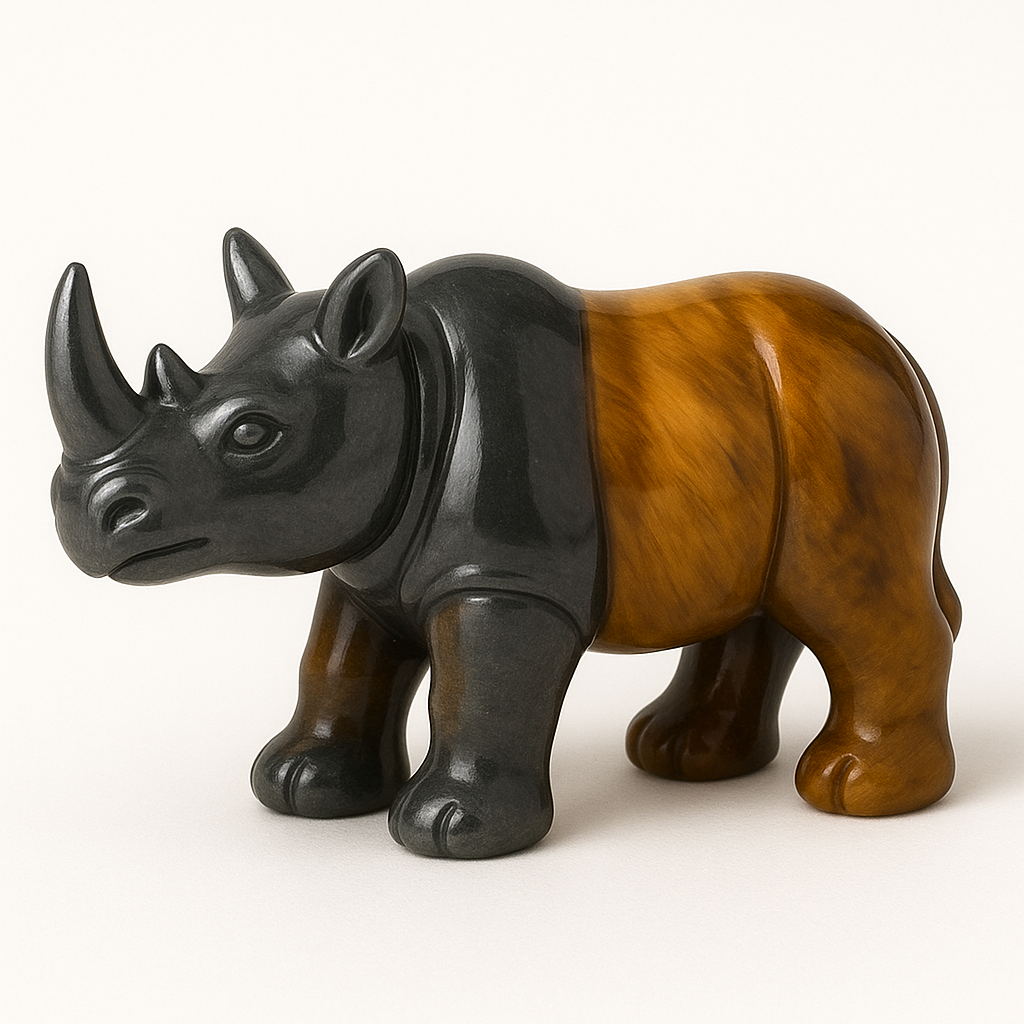
The Symbolism of Rhinoceroses
Share
Thick-skinned and solitary, the rhinoceros moves with massive presence, slow yet certain, grounded in a power that does not boast. It is not aggressive without cause, yet its strength is unquestionable. Its horn, sharp and prominent, rises not in ornamentation but as a sentinel of personal space, a symbol of boundaries, inner stillness, and instinctive protection. The rhinoceros embodies self-containment, grounded sovereignty, and the quiet force of natural authority.
To contemplate the rhinoceros is to come into contact with anchored power, the kind that neither retreats nor chases, but stands when standing is needed, and moves only when fully rooted.
The Silent Guardian in Cultural Memory
While not as mythologically celebrated as some creatures, the rhinoceros appears in various cultures as a symbol of protection, longevity, and elemental stability.
In some African traditions, the rhino is revered as a totem of inner strength, representing the ability to hold one's ground against distortion without needing to assert dominance. It is seen as a creature that knows itself without conflict.
In Indian mythology, the rhino appears in association with certain forest spirits and is thought to embody Earth wisdom, with its horn seen as a powerful talisman for energetic defense and purification.
In medieval European bestiaries, the rhinoceros was sometimes mistaken for a unicorn, reflecting an ancient confusion between wild strength and sacred singularity. In this, even error speaks to the otherworldly presence that surrounds the rhinoceros—its rarity, its groundedness, and its uncompromising authenticity.
Solitude, Strength, and Presence Without Performance
Rhinoceroses are generally solitary animals, walking their terrain with slow, deliberate confidence. They are not social in the way of herding species, yet they are not disconnected—they are simply complete within themselves.
Their skin is thick, yet alive. Their horn is not bone but keratin, grown and worn like a crown of instinct. They do not use it to display power, but to defend space when it is violated. This reflects pure boundary energy, untainted by aggression or fear.
Their pace is slow unless provoked. Their rest is deep. They live close to the ground, consuming vegetation, and reflecting the wisdom of conserving force, of choosing movement with care, and of honoring the body’s natural rhythm without apology.
In all this, the rhinoceros becomes a teacher of non-reactive power, of strength as stillness, and of self-protection as sacred practice.
Resonance with the Energy Centers
The rhinoceros resonates primarily with the red-ray energy center—the root chakra, which governs survival, groundedness, boundaries, and the instinctual interface with the Earth.
This resonance is undistorted. The rhinoceros is fully embodied, deeply present, and entirely attuned to the terrain beneath its feet. Its instincts are not hurried, nor disconnected—they are finely calibrated to real necessity. The red-ray, when pure, is not fear—it is living rootedness, and the rhinoceros is its expression in form.
There is also a secondary resonance with the yellow-ray energy center—the solar plexus chakra, which governs identity within social structures, energetic autonomy, and the balance of power among beings.
The rhinoceros does not seek dominance, but it commands space. It moves with personal authority, never asking for permission. Its energy is non-negotiable, not in force, but in presence. This is yellow-ray not of manipulation, but of sovereign balance—the self that knows itself and respects its boundary without projection.
Together, red and yellow manifest in the rhinoceros as:
rooted power,
silent authority,
and the strength of simply being.
The One Who Knows How to Stand
To walk with the rhinoceros is to learn how to hold the field, how to be unmoved without being rigid, and how to protect without distorting. It teaches that not all power announces itself, and that sometimes the greatest strength lies in still presence, in silence, and in the body’s deep knowing.
The rhinoceros does not ask to be seen.
It is seen—because it is.
It does not pursue conflict.
But if approached wrongly, it reminds others where the line stands.
It teaches:
Hold your space.
Know your weight.
And walk without hurry, for the Earth knows you are here.